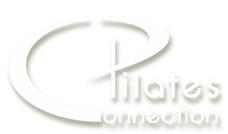
Unveiling the Power of Hypopressive Technique: A Comprehensive Guide
In recent years, fitness enthusiasts and healthcare professionals alike have been turning to the hypopressive technique as a holistic approach to core strengthening and overall well-being. In this guide, we’ll explore what the hypopressive technique is, delve into its myriad benefits, discuss the symptoms it can help correct, and identify who can benefit the most from incorporating this innovative practice into their routines.
What is the Hypopressive Technique?
The hypopressive technique, also known as Low-Pressure Fitness, is a set of exercises designed to engage and strengthen the deep core muscles. Unlike traditional abdominal exercises that rely on repetitive crunches, the hypopressive technique emphasises a combination of specific breathing patterns and isometric contractions to create a vacuum effect in the abdominal cavity. This unique approach activates the pelvic floor, transverse abdominis, and other stabilising muscles, promoting a more robust and functional core.
Benefits of the Hypopressive Technique:
- Core Strengthening: Hypopressive exercises go beyond surface-level muscles, targeting the deep core to enhance overall strength and stability.
- Improved Posture: By promoting awareness and strength in the core muscles, the hypopressive technique contributes to better posture, reducing the risk of back pain and musculoskeletal issues.
- Pelvic Floor Health: The technique is particularly beneficial for individuals dealing with pelvic floor dysfunction, as it engages and strengthens these crucial muscles.
- Diastasis Recti Management: For postpartum women experiencing diastasis recti (separation of abdominal muscles), hypopressive exercises can aid in closing the gap and restoring abdominal integrity.
- Reduced Incontinence: The hypopressive technique has shown promise in alleviating symptoms of urinary incontinence by enhancing pelvic floor function.
Symptoms Hypopressive Technique Can Help Correct:
- Urinary Incontinence: For those experiencing bladder control issues, the targeted strengthening of the pelvic floor muscles can help mitigate symptoms.
- Diastasis Recti: Postpartum women dealing with abdominal separation can benefit from the technique’s focus on restoring core integrity.
- Low Back Pain: Improved core stability often reduces strain on the lower back, making hypopressive exercises a valuable tool in managing and preventing back pain.
Who Can Benefit from the Hypopressive Technique?
- Postpartum Women: Hypopressive exercises offer a gentle yet effective way for new mothers to regain core strength and address issues related to pregnancy, such as diastasis recti.
- Individuals with Pelvic Floor Dysfunction: Those dealing with pelvic floor issues, including incontinence, can find relief through targeted exercises that engage and strengthen these muscles.
- Athletes: The enhanced core stability and improved posture resulting from the hypopressive technique can be advantageous for athletes, potentially improving performance and reducing the risk of injuries.
- Anyone Seeking Core Stability: Incorporating hypopressive exercises into a routine can contribute to overall core stability and well-being regardless of age or fitness level.
What does training involve?
It’s important to learn the Hypopressive technique under the watchful eye of trained professionals. Having undergone three stages of certification, Liane Geeves, owner and operator
of Pilates Connection in Lane Cove, Sydney, along with our instructor, Larissa, are fully accredited through The International Hypopressives Council to offer specialised training and guidance.
Following a private session in our treatment room or via Zoom for those out of the area, we will assess suitability and work through the techniques with you. These exercises can be then incorporated into an ongoing customised Pilates program here in our studio, or practised at home. As little as 10 to 15 minutes a day is all it takes to start seeing significant results and improvements in symptoms once you have been correctly introduced to the Hypopressive Technique by a certified therapist who can guide you through progressions and share gentle fascial release techniques that help to release tension in breathing offering a deeper co-operation of the pelvic floor with the diaphragm.
If you would like to talk further about Hypopressive training, and the methods employed here at the studio, or to book an initial consultation, please feel free to contact Liane.

Sorry, the comment form is closed at this time.